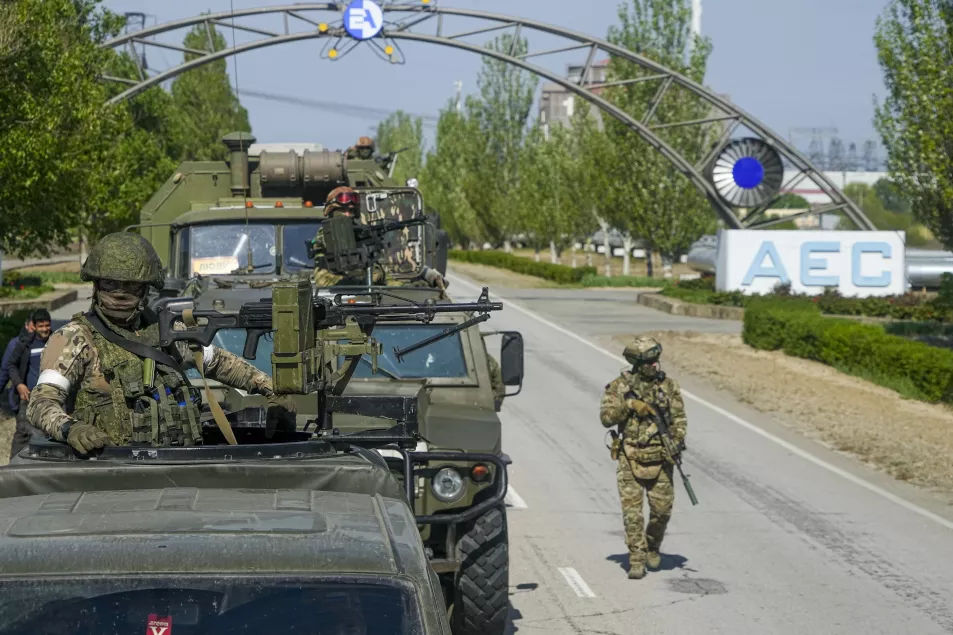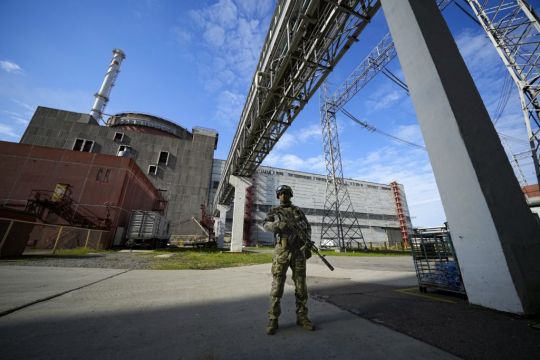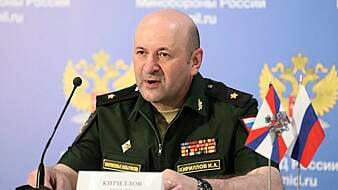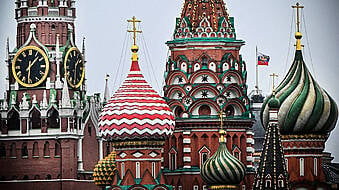Inspectors from the International Atomic Energy Agency are used to risky missions – from the radioactive aftermath of the Fukushima disaster in Japan to the politically charged Iranian nuclear programme.
But their deployment amid the war in Ukraine to Zaporizhzhia takes the threat to a new level and underscores the lengths to which the organisation will go in attempts to avert a potentially catastrophic nuclear disaster.
The six-month war sparked by Russia’s invasion of its western neighbour is forcing international organisations, not just the IAEA, to deploy teams during active hostilities in their efforts to impose order around Ukraine’s nuclear power plants, pursue accountability for war crimes and identify the dead.
The Zaporizhzhia plant was once again knocked offline in the early hours of Saturday amid sustained shelling that destroyed a key power line and penetrated deep into the plant’s premises, local Russian-backed authorities said.
The IAEA’s mission is meant to help secure the site as Moscow and Kyiv continue to trade blame for shelling at and around the plant.
The plant has repeatedly suffered complete disconnection from Ukraine’s power grid since last week, with the country’s nuclear energy operator Enerhoatom blaming mortar shelling and fires near the site.
Noting that the IAEA sent inspectors to Iraq in 2003 and to the former Soviet Republic of Georgia during fighting, Tariq Rauf, the organisation’s former head of verification and security, said: “This is not the first time that an IAEA team has gone into a situation of armed hostilities. But this situation in Zaporizhzhia, I think it’s the most serious situation where the IAEA has sent people in ever, so it’s unprecedented.”
IAEA director-general Rafael Mariano Grossi highlighted the risks on Thursday when he led a team to the sprawling plant in southern Ukraine.

“There were moments when fire was obvious – heavy machine guns, artillery, mortars at two or three times were really very concerning, I would say, for all of us,” he said of his team’s journey through an active war zone to reach the plant.
Speaking to reporters after leaving colleagues inside, he said the agency is “not moving” from the plant from now on, and vowed a “continued presence” of agency experts.
But it remains to be seen what exactly the organisation can accomplish.
Mr Rauf said: “The IAEA cannot force a country to implement or enforce nuclear safety and security standards. They can only advise and then it is up to… the state itself.”
In Ukraine, that is further complicated by the Russian occupation of the power station.
The IAEA is not the only international organisation seeking to locate staff permanently in Ukraine amid the ongoing war.
International Criminal Court prosecutor Karim Khan has visited Ukraine three times, set up an office in the country and sent investigators into a conflict zone to gather evidence amid widespread reports of atrocities. National governments including the Netherlands have sent expert investigators to help the court.
Mr Khan told a United Nations meeting in April: “This is a time when we need to mobilise the law and send it into battle, not on the side of Ukraine against the Russian Federation or on the side of the Russian Federation against Ukraine, but on the side of humanity to protect, to preserve, to shield people… who have certain basic rights.”
The International Commission on Missing Persons, which uses a hi-tech laboratory in The Hague to assist countries attempting to identify bodies, has already sent three missions to Ukraine and set up an office there.

The IAEA’s biggest operation to monitor any country’s nuclear programme is Iran, where it has been the key arbiter in determining the size, scope and aspects of Tehran’s programme during the decades of tensions over it.
Since Iran’s 2015 nuclear deal with world powers, the IAEA has had surveillance cameras and physical inspections at Iranian sites.
But that monitoring has not been easy. Since then-president Donald Trump unilaterally withdrew America from the deal in 2018, Iran has stopped the IAEA from accessing footage from its surveillance cameras. Other online monitoring devices have been affected as well.
In 2019, Iran alleged an IAEA inspector tested positive for suspected traces of explosive nitrates while trying to visit Iran’s underground Natanz nuclear facility. The IAEA strongly disputed Iran’s description of the incident, as did the US.
Another risky and challenging mission was in the aftermath of the Fukushima nuclear plant disaster in Japan. About two weeks after the March 11, 2011, earthquake and tsunami that caused reactor meltdowns and hydrogen explosions at reactor buildings, the IAEA sent experts to monitor radiation, sample soil and check food safety, but they largely stayed outside of the plant.
They returned later in full hazmat suits, masks, gloves and helmets to inspect the remains of the stricken Fukushima Daiichi plant.
The situation in Zaporizhzhia, with Russia and Ukraine trading accusations of shelling the area, has the potential to be just as devastating.
“Any time a nuclear power plant is in the middle of armed hostilities, shelling on its territory and nearby creates unacceptable risks,” Mr Rauf said.
“Any misfired shell could hit one of the reactors or disable some system that can lead to much bigger consequences.”







